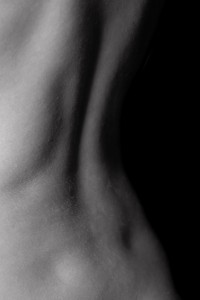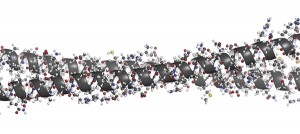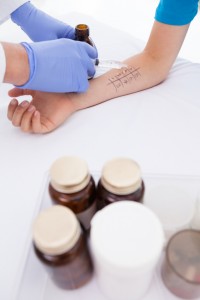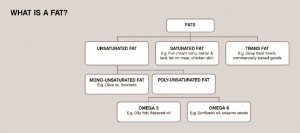The Pill
Birth control pills or Oral contraceptives known also as the Pill, OCs, BCs, BC tablets contain two types of hormones, usually man-made oestrogens and progestins and, when taken properly, prevent pregnancy. FACT. Hormone therapy in pill form is commonly used in conventional medicine.
Contraceptive Pill, Facts
The Lowdown on the Contraceptive Pill, Myths i.e. What Every Woman Should Know [tweetthis]The Lowdown on the Oral Contraceptive Pill, Myths i.e. What Every Woman Should Know [/tweetthis]
COC, combined pill, ‘The Pill’, COCP – The combined oral contraceptive pill (COCP) is a highly effective form of contraception and used to control fertility by almost 20% of women aged 16-49 years in the UK. Commonly used brand names (updated): Rigevidon, Microgynon 30, Gedarel 30/ 150 FACT.
Most women want their oral contraceptive to be a reliable and acceptable form of birth control that is convent and flexible and free from oestrogen related side-effects. FACT.
The Contraceptive Pill, Myths
Hormonal forms of birth control, such as the Pill, can improve hair health. FICTION. The American Hair Loss Association recommends that all women interested in using oral contraceptives for the prevention of conception should only use low-androgen index birth control pills, and if there is a strong predisposition for genetic hair loss in your family we recommend the use of another non-hormonal form of birth control. FACT.

The Contraceptive Pill, Myths
The Contraceptive Pill, Debunking Myths
All Oral contraceptives work by primarily inhibiting ovulation. FICTION. The Minipill works by thickening your cervical mucus, so that it is more difficult for sperm to get through. POP or progestin or progestogen only pills thin the lining of your womb, therefore making it much less likely that an ovum (egg) will implant there. This affects the motility in your Fallopian tubes, thus reducing the chances of fertilisation and in some instances, prevents ovulation (egg release) – this is particularly so with Cerazette.
Cerazette is an oestrogen-free, progestogen-only oral contraceptive pill (POP). FACT
The minipill is oestrogen free. Common brand names: Cerelle and Cerazette and Aizia and Nacrez and Zelleta. It is also known as the progestin-only birth control pill, is an oral contraceptive that contains the hormone progestin. Unlike combination birth control pills, the minipill doesn’t contain estrogen. The progestin dose in a minipill is lower than the progestin dose in a combination oral contraceptive pill. FACT.
Undesirable side-effects of the Pill occur only with COP. FICTION.
Undesirable effects reported by some women treated with Cerazette include: acne, breast pain, mood and libido changes, nausea and weight increase. FACT.
Smoking cigarettes while using oral contraceptives has been found to greatly increase chances of serious side effects occurring. FACT. In particular, cigarette smoking increases the risk of serious cardiovascular side-effects from combined oral contraceptive use. The risk increases with age and with heavy smoking (15 or more cigarettes per day) and is quite marked in women over 35 years of age.

Contraceptive Pill Side Effects
St John’s Wort (Hypericum perforatum) can speed up the breakdown of the hormones in Cerelle – progestogen only contraceptive – by the liver, which makes it less effective at preventing pregnancy. FACT. In fact, a list of medications that has a similar effect include aprepitant, bosentan, barbiturates, carbamazepine, crizotinib, dabrafenib, efavirenz,
eslicarbazepine, nevi rapine, oxcarbazepine, perampanel (12mg), phenobarbital, phenytoin, primidone,
rifampicin, rifabutin, ritonavir, rufinamide, topiramate, vemurafenib.
Cerelle tablets contain lactose and should not be taken by women with rare hereditary problems of galactose intolerance, the Lapp lactase deficiency, or glucose-galactose malabsorption. FACT.
Common side-effect of Cerelle or desogestrel affect between 1 and 10 out of every 500 women. FICTION. Common side-effect of Cerelle or desogestrel affect between 1 and 10 out of every 100 women. These include: changes in menstrual bleeding, eg irregular bleeding or sometimes stopping of bleeding, mood changes, including depression, decreased sex drive, headache, nausea, acne, breast tenderness, weight gain. FACT.
Selegeline used to treat Parkinson’s disease and also as an antiageing supplement and an antidepressant should be avoided with the pill. FACT. Other brand names include, Deprenyl, Eldapryl, Emsam.
While you are on the Pill and you wear contact lenses – should you notice a change in vision or an inability to wear you lenses, contact your doctor or health care provider. FACT.

Side Effects Of
Combined birth control pills (oral contraceptives) can improve acne in women. FACT. However, it should also be noted that melasma – a spotty darkening of the skin is possible – particularly of the face, which may persist.
Combination birth control pills and preston only birth control pills will not protect you from sexually transmitted infections. FACT.
Monophonic and multiphasic are types of progestin only birth control. FICTION. Combination birth control pill can be categorised as i) monophasic: each active pill contains the same amount of estrogen and progestin and i) multiphasic: the amounts of hormones in active pills vary. FACT.
Taking combination birth control pills or minipills (progestin-only birth control pills) during early pregnancy increases the risk of birth defects. FICTION. While some research has suggested a link between the use of birth control pills near conception and an increased risk of low birth weight, preterm delivery or congenital urinary tract abnormalities, these concerns generally haven’t been observed in clinical experience.
Combination birth control pills increase the risk of certain conditions. Some of these complications can be serious. They include the following: Blood clots in the legs, Gallbladder disease, Heart attacks and stroke (smoking greatly increases the risk of these complications), Liver tumours. FACT.
DID YOU KNOW?
If you enjoyed reading this article, you can apply for membership and receive tailored reminders when further reading is available on our NEWS PAGE – just choose The Body Youth Code of choice and we’ll do the rest! Psssst… this takes 10-20 seconds max.




















